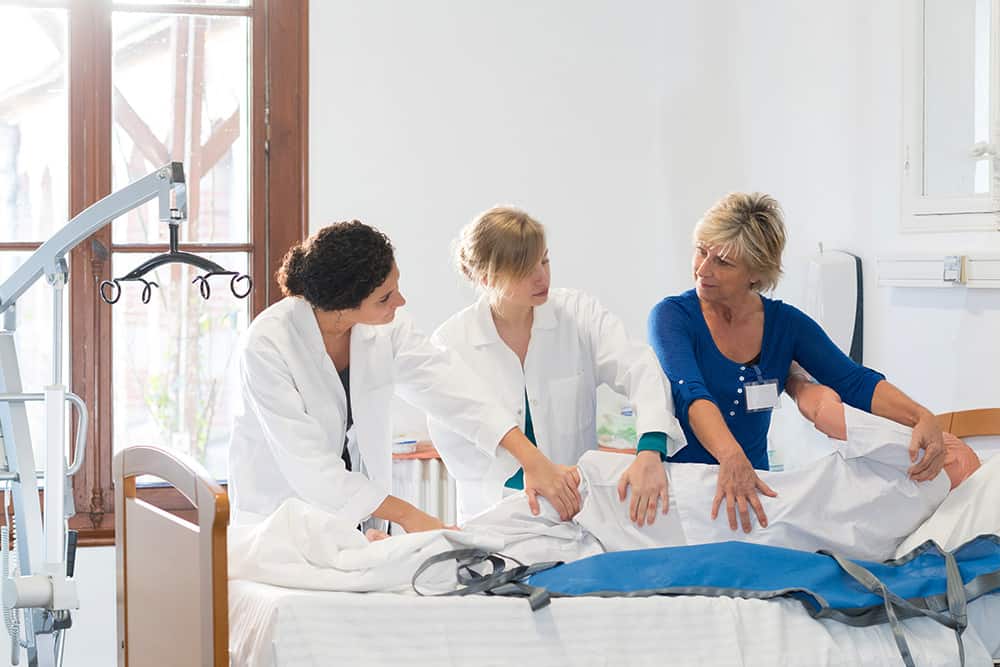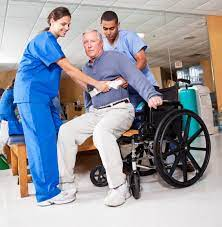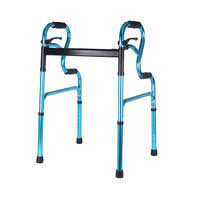As the global population ages, care homes have become vital institutions, ensuring the elderly and vulnerable receive the care, support, and dignity they deserve. One of the essential aspects of care home operations is ‘manual or manual handling duties’ – the tasks that involve lifting, lowering, pushing, pulling, or moving residents. Given the physical vulnerability of many care home residents, ensuring safe manual handling practices is paramount. Let’s dive deep into the world of manual handling within care homes, shedding light on its significance, challenges, and best practices.
The Significance of Manual Handling in Care Homes
Manual moving and handling of isn’t merely about physical tasks. It represents the commitment of care home staff to provide residents with the highest quality of life. This can involve:
- Assisting residents out of bed
- Helping them into chairs or wheelchairs
- Guiding them during walks
- Ensuring they can safely use facilities like baths or toilets
Every movement needs to prioritize the health and safety of, comfort, and dignity of the resident.
The Challenges of Manual Handling
a. Physical Strain on Caregivers: Repeated lifting or assisting residents can be physically demanding, potentially leading to injuries or musculoskeletal disorders.
b. Safety Concerns for Residents: Improper handling specialist equipment can lead to falls, fractures, or discomfort for the elderly person.
c. Emotional and Psychological Impacts: Inadequate manual handling can lead to feelings of loss of dignity or independence among residents.
Principles of Safe Manual Handling in Care Homes
a. Risk Assessment: Before any manual handling, assess the risk to both the resident and the caregiver. Consider the risk assessments the resident’s weight, the caregiver’s strength, and any potential obstacles.
b. Use of Equipment: Harness the power of equipment like hoists, slide sheets, or transfer boards to make lifting operations and handling tasks safer and more comfortable.
c. Training: Continuous training ensures that all care workers and home staff are updated on the latest manual handling equipment, techniques and safety protocols.
d. Personalized Care: Understand the unique needs and preferences of each resident. Some might have mobility issues or prefer a particular way of being moved or supported.
Promoting Independence While Ensuring Safety
While safety is paramount, promoting a resident’s independence is equally vital. Encourage residents to do as much as they can on their own, providing support only when necessary. This balance ensures physical safety while also supporting mental health and social and emotional well-being.
The Role of Technology and Equipment
In recent years, there’s been a surge in equipment designed to aid manual handling in care homes:
a. Mobile and Ceiling Hoists: These devices can lift and move residents with minimal physical strain on caregivers.
b. Transfer Aids: Slide sheets, transfer boards, and rotating discs can help in shifting residents from one position to another.
c. Adaptive Furniture: Specialized beds, chairs, and toilets designed for care home residents can reduce the need for intensive manual handling.
Training and Continuous Learning
Ensuring safe manual handling doesn’t end with a single training session. Continuous learning, refresher courses, and practical demonstrations are crucial:
a. Regular Workshops: Organize frequent workshops to demonstrate proper techniques.
b. Feedback Sessions: Allow caregivers to share their experiences, challenges, and suggestions related to social care and manual handling.
c. Stay Updated: The world of care is always evolving. Ensure that the care home adopts the latest best practices and equipment.
The Psychological Dimension of Manual Handling
Beyond physical safety, manual handling has a profound psychological dimension. Residents should never feel like a ‘burden’. Ensure communication is compassionate, asking residents about their comfort and preferences. Such interactions preserve their dignity and foster a positive care home environment.
Manual Handling TasksCommon Manual Handling Tasks
a. Lifting: Raising an object or lifting equipment from a lower to a higher position, like picking up boxes.
b. Lowering: Placing an object down from a raised position.
c. Pushing: Applying force to move something away, such as pushing a cart.
d. Pulling: Drawing an object towards oneself.
e. Carrying: Transporting an item from human body from one location to another.
f. Holding or Supporting: Maintaining an object’s position, like holding a tray.
Manual handling refers to the physical tasks involved in transporting or supporting objects by hand or bodily force. It encompasses a broad range of activities and is common in many work settings. However, improper techniques can lead to injuries, making it essential to understand and execute these tasks correctly.
Potential Risks Associated with Manual Handling
a. Musculoskeletal Disorders (MSDs): Strains, sprains, and injuries to muscles, ligaments, tendons, nerves, discs broken bones, and blood vessels.
b. Fatigue: Physical exhaustion from overexertion.
c. Falls: Tripping or slipping while carrying objects.
d. Cuts or Bruises: Resulting from a manual handling injuries to fragile skin by sharp or rough objects.
e. Crush Injuries: Occur of serious injury when body parts get caught between objects.
What Constitutes Poor Manual Handling Practice?
a. Incorrect Lifting Techniques: Bending from the waist rather than the knees, or twisting the body while lifting.
b. Overexertion: Attempting to lift, carry, push, or pull loads that are too heavy or bulky without assistance.
c. Not Using Available Equipment: Ignoring tools designed to aid manual moving and handling equipment, like trolleys or hoists.
d. Inadequate Training: Employees not being trained, or most employees being poorly trained, in correct manual handling techniques.
e. Improper Use of Personal Protective Equipment (PPE): Failing to wear appropriate gloves, footwear, or other protective gear.
f. Hasty Actions: Rushing tasks without assessing the risk of injury risks involved, or ensuring stable grips and balanced loads.
Equipment Regulations
From the machinery in factories to the appliances in our homes, equipment plays an integral role in our daily lives. Ensuring the health and safety standards, efficiency, and reliability of this equipment is paramount. Equipment regulations, governed by various national and international bodies, ensure that equipment meets specific standards.
The Importance of Equipment Regulations
a. Safety: Regulations ensure that equipment is designed and manufactured in a way that protects users from any serious harm done.
b. Consistency: Standardized guidelines mean that consumers can expect a certain level of quality and performance across similar equipment types.
c. Environmental Protection: Some regulations ensure equipment operates within eco-friendly parameters, minimizing pollution or waste.
d. Economic Considerations: Regulations can help prevent substandard or counterfeit products from entering the market, thereby protecting businesses and consumers from possible risks.
What is Moving and Handling?
Moving and handling broadly refers to any activity that requires an individual to lift, lower, push, pull, carry, move or hold any load, be it a person (especially in healthcare settings) or an object.
Importance of Safe Moving and Handling
a. Reducing Injury Risks: Proper techniques minimize the risk of musculoskeletal injuries, strains, and sprains.
b. Enhancing Efficiency: Efficient moving and handling techniques often mean less effort and quicker task completion.
c. Safeguarding Well-being: In healthcare settings, it’s not just the handler at risk, but also the patient or individual being moved.
d. Legal Compliance: In many countries, there are legal regulations surrounding safe and moving equipment, and handling practices.
What is a Manual Handling Policy?
A manual handling policy is a structured document that outlines an organization’s approach to minimizing risks associated with tasks that require lifting, carrying, moving, holding, pushing, or pulling loads without the aid of machinery.
Importance of Manual Handling Policies
a. Worker Safety: The primary purpose of these policies work regulations is to prevent injuries, which can be debilitating and long-lasting.
b. Legal Compliance: Many jurisdictions have strict health and safety laws. A robust policy ensures that an organization stays compliant.
c. Consistency: A policy provides a standard approach to manual handling across the organization.
d. Financial Implications: Reducing injuries can lead to fewer worker compensation claims and lower insurance premiums.
What are Mechanical Aids?
Mechanical aids are devices or tools designed to assist in the lifting, moving, or holding of objects, reducing the need for manual effort and thereby decreasing the risks associated with manual handling.
Manual handling in care homes is a delicate dance of safety, dignity, and compassion. With the right training, equipment, and mindset, caregivers can ensure that residents not only receive the physical support they need but also feel valued and respected. In the realm of care, every lift, every push, and every pull carries a profound responsibility – one that transcends mere physical tasks and touches the very essence of human dignity and care.


